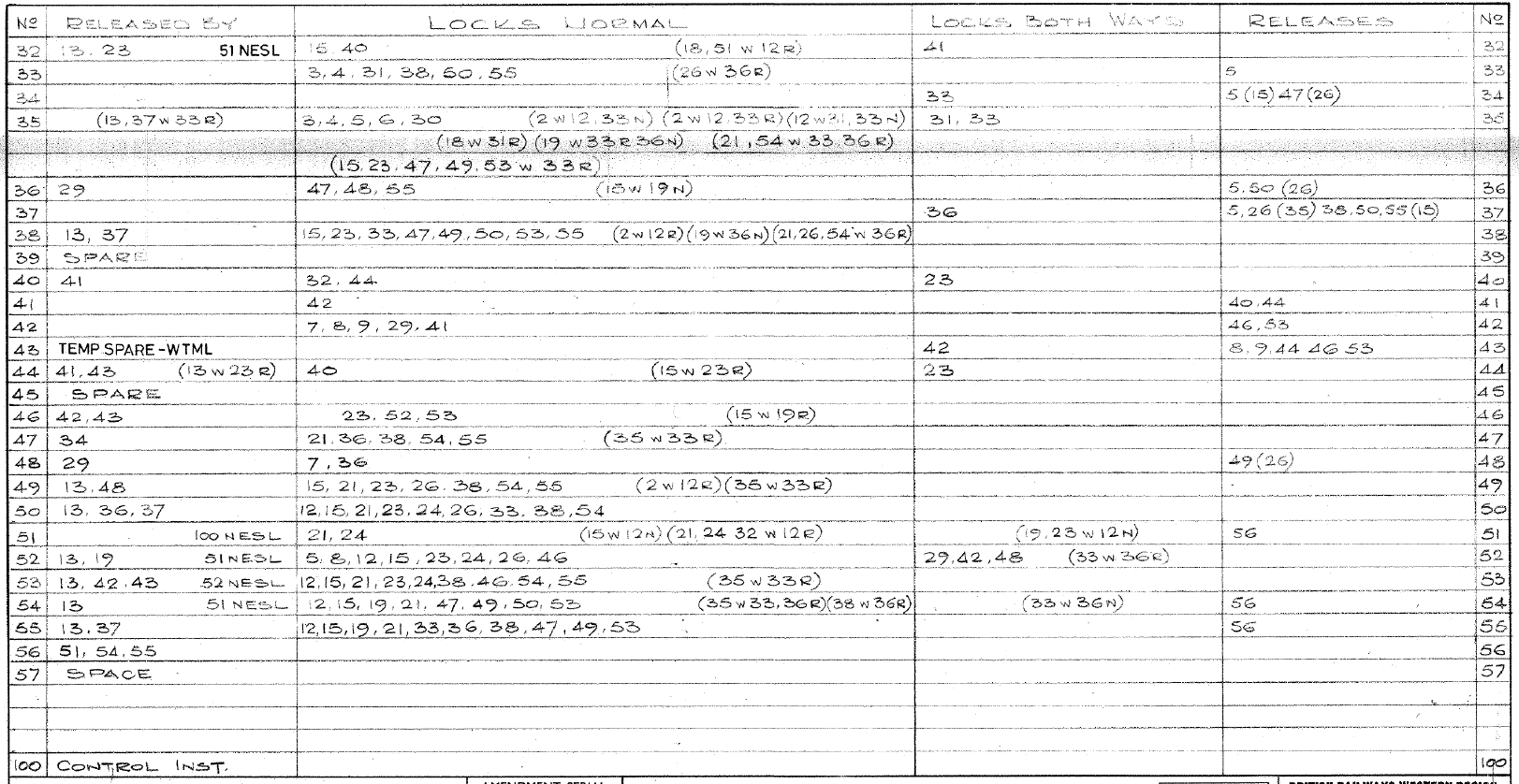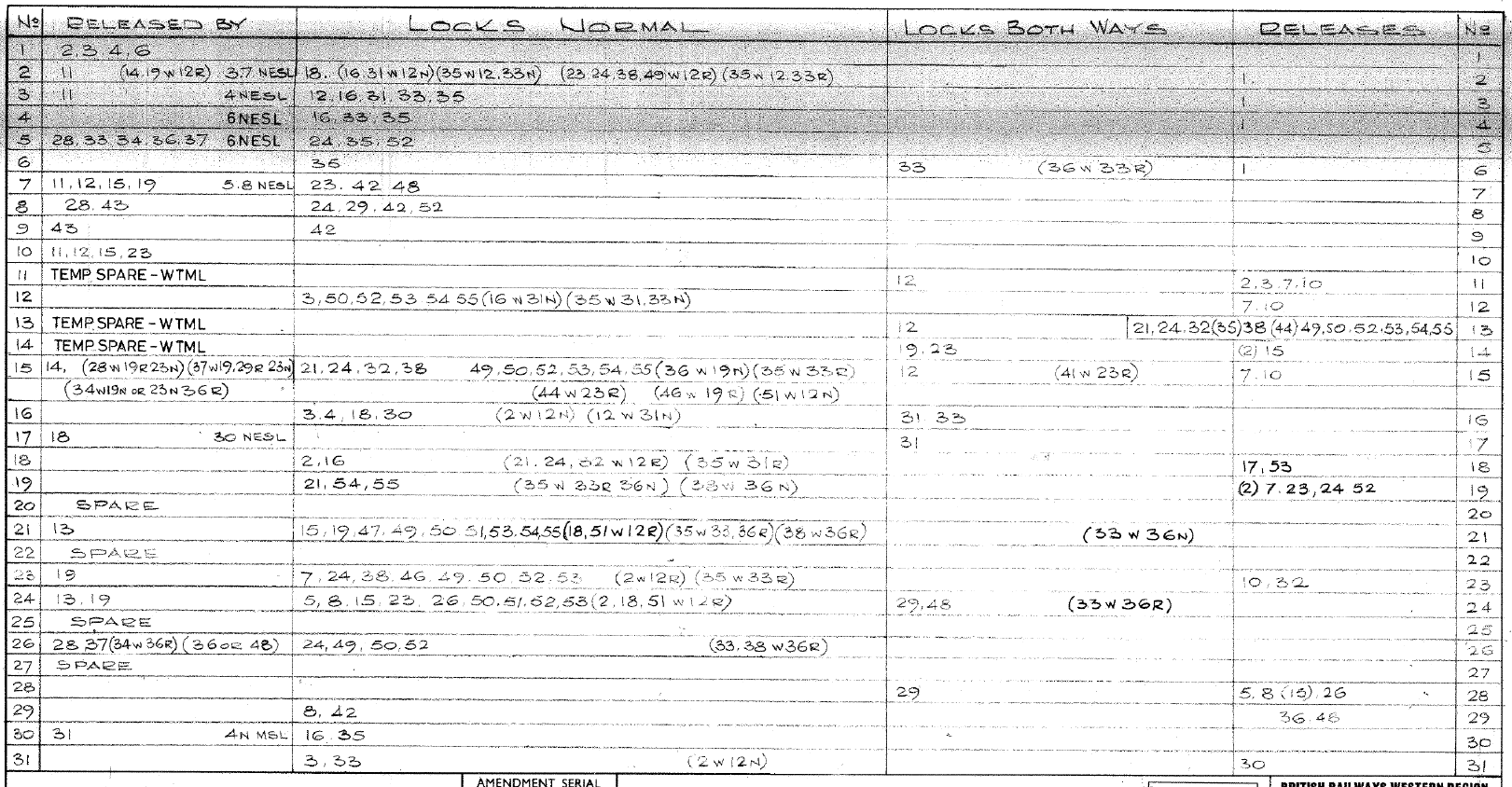Page 1 of 1
| Signal PR38 14/11/2024 at 00:09 #159171 | |
|
TUT
532 posts |
I'm rather intrigued by the meaning and function of the sadly departed PR38 at Par and wonder if anybody knows. PR38 was the disc mounted below PR55 (and in reality PR50 on the left). Its plate identified it as disc up main home or to up branch. This I have to say intrigued me a bit. It suggests (and SimSig's implementation seems to support this) that it functioned as a calling-on signal. Slightly unusual, I believe, for a disc to be provided as and instead of dedicated 2-ft calling on arms below the main arms, but far from unthinkable. What interests me further, though, is the pull plate. It required 37 (the lock on 36 points, the up main to up branch facing crossover), which makes sense, but also interestingly 13 (the (latterly spare, but worked to maintain the locking) lock on 12A, the mains facing crossover on the London side of the station. For a calling on signal to need facing points some 75 yards beyond the next main aspect bolted strikes me as more than a little unusually cautious. If your calling-on movement reaches a set of facing points 75+ yards outside the station it's already had quite a serious impact! It occurred to me that it could be that 38 would clear with 21 or 24 (the discs below the starting signals PR54 and PR52 respectively) off to perhaps aid shunting in some way but SimSig's implementation does not support that. Anybody know what it was for and how it was used? Log in to reply |
| Signal PR38 14/11/2024 at 09:20 #159173 | |
|
kbarber
1742 posts |
Speculation, but far from unthinkable; is it possible that it was a way of saving locking? If 50 and 55 were both released by 37R and 13R, that same locking could be used to release 38. 50 and 55 would then be locked against each other by the position of 36, which of course was omitted from 38. Just a thought. Log in to reply |
| Signal PR38 15/11/2024 at 01:08 #159188 | |
|
lucya
17 posts |
kbarber in post 159173 said:Speculation, but far from unthinkable; is it possible that it was a way of saving locking?I've attached the locking table if its of any interest.   Post has attachments. Log in to view them. Log in to reply The following users said thank you: kbarber, TUT |
| Signal PR38 15/11/2024 at 16:39 #159199 | |
|
TUT
532 posts |
lucya in post 159188 said:kbarber in post 159173 said:Very interesting indeed, thank you for that.Speculation, but far from unthinkable; is it possible that it was a way of saving locking?I've attached the locking table if its of any interest. Well from that we can see that 24 mechanically locks 50 but not 38 and likewise 21 mechanically locks 55 but not 38 (except, crucially, with 36 reverse and the route set for the Up and Down Branch up to 52/24 NO 54/21). We further see that 50 mechanically locks 24 (well of course it has to, the locking is reciprocal) and 55 mechanically locks 21 (of course), but 38 does not lock 24 and only locks 21 with 36 reverse. 38 was fitted with a plunger so I don't know what electrical locking may have been provided but mechanically at least 38 is free to clear towards 24 or 21 off. The same would also seem to be true of 35, 49 (towards 24) and, actually, 46 calling-on signal (towards 24). Note 46 calling-on does not need 13, whereas 38 does. Last edited: 15/11/2024 at 16:41 by TUT Reason: None given Log in to reply |
| Signal PR38 15/11/2024 at 18:30 #159200 | |
|
lucya
17 posts |
TUT in post 159199 said:From the perspective of approaching signal 24, you would not want to have it pulled off before bringing the train to a (near) stand if it was done on a main signal. Having signal 50 lock 24 normal would prevent this from happening, as the rulebook requires that you do not put a signal back until the train has passed over all facing points (by which time the speed would be sufficently controlled). It would be my view that signal 38 allows a movement to happen without the "approach control" at signal 24. This is also in line with the principle that all shunt signals for the movement, where feasible, should be cleared before a train is allowed to start. From the copy of the box instructions I have, permissive platform working is only allowed on the branch platform from PR46 to PR52 for attaching trains from the Up Branch only. Last edited: 15/11/2024 at 18:31 by lucya Reason: None given Log in to reply |
| Signal PR38 16/11/2024 at 06:06 #159202 | |
|
TUT
532 posts |
lucya in post 159200 said:My thoughts precisely. Thanks very much for your help so far. Which would make SimSig's implementation quite wrong, if that's the case, albeit not the biggest of clangers I admit. Log in to reply |